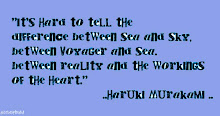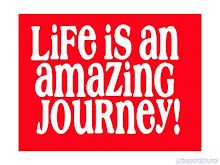Have you ever met someone who is so smart or even genius that make you really wanna be that person? I think we all can be smart or genius, it's all in our mind. What makes a smart person is different from others is the way the person thinks. Don't you think so? If we're able to keep our mind sharp, then we can also be a genius. We have now information overload from the magazine internet, newspaper and so on that can make us us easier to find information about mostly everything. Here's a short article on "3 Things You Can Do To Think Like A Genius" written by Erika Andersen via Forbes.
Get curious
Curiosity is that deep internal impulse to investigate. We all have it – it’s the thing that makes us read People magazine. Children have it in abundance: it’s the source of their endless “why?” and “then what?” questions. Unfortunately, by the time we get to be adults, it’s been largely socialized out of us (except for the aforementioned People magazine reading). If you want to access and develop your innate ability to see patterns, you have to first re-ignite your curiosity. One great way to do it is to consciously ask “Why is that happening?” or “How does that work?” in day-to-day situations that you’ve come to take for granted. For instance, I recently encouraged a client to reflect on why her relationship with an employee had gotten strained. She came back to me a couple of weeks later, saying that once she started looking at what had changed, she realized that she had fallen into the habit of disagreeing with his ideas in meetings because his way of presenting those ideas was irritating to her – and that she was both ignoring some potentially useful ideas and hurting their relationship as a result. Voila – pattern recognition!
Be objective.
My client’s recognition of that unhelpful pattern – and her part in it – required not only curiosity but also objectivity. Objectivity is the ability to look at all sides of a situation with openness and dispassion. If you go into a situation with deeply held pre-conceived ideas about what you’ll find, it’s unlikely that you’ll see anything new. The key to being objective is to cultivate the skill of being a Fair Witness, which I’ve blogged about regularly. The essence of being a fair witness is to observe your own self-talk (your internal monologue) to see whether what you’re saying to yourself about a situation is neutral and accurate. And if it’s not, to change it. For example, if my client had gotten curious but not objective about the situation – with self-talk that supported her pre-existing beliefs, she might have come to the conclusion that her employee was simply an irritating guy, and that there was nothing she could do to improve the relationship. As happened with my client, being a fair witness quite often allows you to see things in new and unexpected ways.
Pull back the camera.
Once you’ve gotten curious and put yourself into an objective, fair witness mindset, it’s critical to step back mentally from a situation so that you can see the whole: that’s when patterns emerge. Years ago, I was at MOMA in New York. When I walked into the room where Monet’s single-panel Water Lilies hangs, I was first struck by its size: it’s over six feet high and almost twenty feet long. You have to stand across the room to take it all in at once; from a distance, you can see how wonderfully Monet captured the tranquility of light-suffused water, floating Japanese lilies, clouds overhead. But when you move in close to the painting, the pattern dissolves, and all you see is a collection of seemingly random brush strokes, in a variety of colors: your ‘camera’ is pulled in too close to make sense of it.
If you ‘get caught in the brush strokes’ it’s nearly impossible to access your own genius. For instance, let’s say that sales are down at a particular company, and the head of sales is desperate to figure out why . If she ‘pulls in the camera too close,’ she might focus, for instance, only on one or two formerly high-performing salespeople who are missing their targets. Just looking at that one part of the situation, she could assume any number of things: that they’ve somehow lost their edge or are slacking off; that firing them will solve the problem; or, conversely, that if she really leans on them, they’ll get better. Based on those assumptions, she might let them go, offer them training, read them the riot act, etc….but never see the whole picture and the real patterns inherent in it.
If, instead, she “pulls back the camera,” she might (for instance) find that an important new product line isn’t performing as promised because there’s a slight manufacturing glitch. The high return level is affecting both current sales numbers and customers’ willingness to reorder. The broader view gives a very different perspective, and will almost definitely lead her to a different, more effective, more genius-like response.
(article via forbes.com - image vai weheartit)



















No comments:
Post a Comment